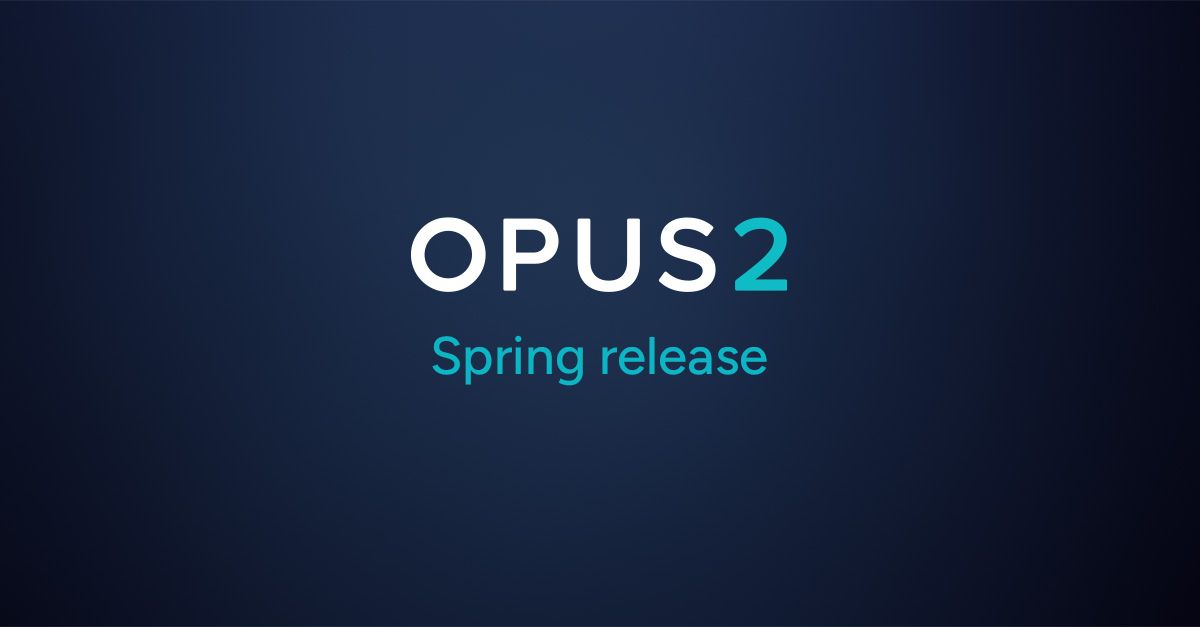Technology plays a crucial role in supporting sustainable arbitration by enhancing efficiency, transparency, and accessibility in the dispute resolution process. Within arbitration, and the disputes industry more generally, there is increasing interest in and awareness of the importance of adopting more sustainable practices. Law firms, arbitrators, and their clients are reassessing how they work and looking for ways to reduce their environmental footprint while maintaining the integrity and effectiveness of arbitration proceedings.
Arbitration technology has emerged as a key enabler of this shift. It allows arbitration participants to move toward digital workflows, leverage virtual and hybrid hearings, and collaborate on cases in real time.
In this article, we’ll explore specific ways that technology supports greener arbitration while improving collaboration, security, and accessibility. We’ll compare the carbon footprint of an in-person hearing to an average Opus 2 hearing. We’ll also discuss key considerations when evaluating arbitration software and technology solutions to ensure they align with both sustainability objectives and operational needs. Finally, we’ll provide a list of helpful resources for those looking to stay informed on sustainability initiatives within arbitration.
The impact of traditional arbitration
Traditionally, arbitration has been a resource-intensive process, often requiring significant time, travel, and paperwork. Hearings and procedural meetings were conducted exclusively in person. And parties, counsel, and arbitrators were reqired to travel—sometimes across the globe—to participate. This logistical complexity impacted both costs and the carbon footprint of arbitration. Additionally, traditional arbitration relied heavily on physical documentation. Arbitration relied on printed evidence and document bundles with multiple copies often being shipped long distances between institutions, legal teams, and arbitrators.
How sustainability is shaping dispute resolution
Sustainability has been a recurring theme across the legal industry for the last several years. From new directives on corporate sustainability due diligence like Directive 2024/1760 from the EU to the rising number of climate-related disputes, the focus on ESG-related issues is shaping the future of law.
As awareness of the issue has grown, arbitration institutions, law firms, and clients have shown increasing interest in greener arbitration practices. And industry initiatives like the Campaign for Greener Arbitrations and the Greener Litigation Pledge are driving efforts to increase awareness of the environmental impact of dispute resolution. These organisations offer strategies and best practices that encourage practitioners to rethink long-standing habits and embrace more eco-conscious practices.
Technology is playing a pivotal role in this transformation. It is not just about convenience—it is about transforming arbitration to be more effective, sustainable, and accessible. Digital case management platforms, virtual hearings, and AI-enabled tools are helping to streamline processes, decrease waste, and reduce the need for travel.
While change in the legal industry tends to be gradual, the momentum toward adoption of sustainable arbitration practices continues to grow. Law firms and arbitration institutions that prioritise sustainability now are certain to benefit long into the future.
Sustainability benefits of arbitration technology
The digital transformation of arbitration is reshaping how disputes are resolved, offering a more sustainable and efficient approach to case management. This shift is not merely about modernisation; it represents a fundamental change in how arbitration is conducted. By integrating technology at every stage, from case preparation to hearings and final awards, legal professionals can improve collaboration, enhance data security, and increase accessibility without compromising procedural integrity.
Embracing digital transformation in arbitration
The shift toward digital arbitration is more than an environmental initiative that can reduce paper waste—it is a fundamental step in modernising dispute resolution. While reducing paper usage aligns with broader sustainability goals, digital transformation also enhances efficiency, collaboration, and security throughout the arbitration process.
Cloud-based arbitration case management systems, like the SIAC Gateway and others, are at the forefront of this transition, streamlining workflows and minimising the duplication of documents. Rather than simply replacing printed bundles with PDFs, digital solutions enable seamless, global collaboration, real-time access to case materials, and improved data management—ensuring that information remains organised and accessible to all parties.
Notably, eDiscovery stands as a testament to the transformative power of technology in arbitration. In fact, many other stages, such as case preparation, hearings, and post-hearing steps like deliberations and award drafting, are also reaping significant benefits from modern technology and following a similar path.
Embracing modern, greener arbitration technology not only reduces paper usage but also unlocks additional advantages:
Improved efficiency with AI
The integration of artificial intelligence (AI) in arbitration is transforming case preparation, making the processes faster and less resource-intensive. By leveraging AI-powered tools, legal teams can navigate large volumes of case materials more efficiently, allowing them to focus on strategy rather than administrative burdens.
One of the most promising applications of AI in arbitration is document review and analysis. Traditionally, reviewing and categorising documents in complex disputes required extensive manual effort. AI-driven tools can now analyze vast datasets in minutes, identifying relevant case materials, detecting patterns, and highlighting inconsistencies. This capability not only accelerates preparation but also reduces the risk of human oversight.
Additionally, arbitration proceedings may soon benefit from real-time, AI-enhanced transcription, multilingual document translation, and testimony summarisation. These capabilities reduce administrative time and ensure that key case details are easily accessible.
Streamlined evidence presentation
Advanced arbitration technology can also improve evidence management and presentation. As new types of discovery data emerge including emails, text messages, social media posts and more, digital platforms offer an adaptable way organise, present, and analyse evidence more effectively. Instead of relying on physical documents and cumbersome binders, legal teams can now leverage sophisticated digital tools for the electronic presentation of evidence, further streamlining arbitration proceedings.
Enhanced data security
A digital-first approach to arbitration provides a higher level of control over data security, ensuring that sensitive information is protected at every stage of the dispute resolution process. Secure arbitration solutions incorporate advanced encryption protocols, multi-factor authentication (MFA), and access controls to safeguard confidential materials.
Another advantage of moving away from paper-based arbitration is the ability to monitor and audit access to case files. Integrated platforms offer detailed audit trails that track who accessed, edited, or shared specific documents, supporting transparency and accountability. This level of oversight is particularly critical in high-stakes disputes, where maintaining the integrity of evidence and protecting privileged information is paramount.
Leveraging hybrid and virtual hearings in arbitration
One of the significant advancements that technology brings to sustainable arbitration lies in its capacity to virtually connect participants to hearings. While in-person proceedings will remain a valuable and likely permanent aspect of arbitration, integrated virtual hearing technology can greatly reduce the need for extensive long-haul flights to resolve disputes.
For example, geographically dispersed parties and arbitrators can choose to conduct administrative meetings and pre-hearing conferences virtually. Or, they may choose to reduce the number of people traveling to participate, sending only those with a pivotal role to attend in person, while connecting others to the proceeding virtually.
Hybrid and virtual hearings, a product of technological innovation enabled by electronic hearings, including e-bundles, electronic presentation of evidence, and real-time transcription, allow primary participants to attend in person, while other can contribute remotely.
Quantifying the positive impact of virtual hearings
To put the potential impact of virtual hearings into perspective, an analysis was conducted in 2023 to quantify the carbon footprint of ‘typical’ hearing in London. The estimated carbon impact of an entirely in-person hearing involving 23 participants and for a 12 days sitting duration was 3.01 tonnes. By contrast, the average carbon footprint of a case involving Opus 2 technology and services is .62 tonnes.
Additional benefits of virtual and hybrid arbitration proceedings include:
Enhanced access to arbitration
While in-person arbitration proves effective for centrally-located parties, it presents challenges for international arbitration historically concentrated in major cities like London, New York, Geneva, and Paris. This concentration becomes a barrier for smaller organisations and emerging players, especially in cases involving developing countries. Technology-enabled virtual hearings break down geographical barriers, enabling broader access to arbitration for those who lack the means or logistical expertise for in-person proceedings.
Educational opportunities for junior lawyers
Technology-enabled hybrid hearings open doors for early-career participants to observe, assist, and learn from proceedings without the financial burden of attending in person. This inclusive approach not only fosters diversity within the sector but also creates positive impacts and better outcomes by providing valuable educational experiences for junior lawyers. The integration of technology thus extends beyond convenience, contributing to the educational and professional growth of emerging legal talent.
The success of virtual and hybrid hearings in achieving positive arbitration outcomes depends on the circumstances of each case, particularly the location of the primary participants involved. Nevertheless, there is no doubt that when used correctly, this technology-enabled tool can significantly mitigate the impact of arbitrations.
Sustainability considerations when adopting arbitration technology
If you’re thinking of adopting technology for greener arbitration, it’s important to ask questions about a vendor’s sustainability practices as part of your selection process.
How do they handle documents?
Different technologies will take distinct approaches to document management. If you have your documents sitting on a server being accessed via Windows Explorer it is likely that the team will share those documents via e-mail or save local versions to make annotations, for example, generating an enormous amount of duplicates saved in different servers and, therefore, contributing to energy waste.
If, on the other hand, you use a case management system that works both as a document repository and a centralised place to create annotations and collaborative tasks, like Opus 2 Cases, there is no need to send documents via e-mail or save them locally. In fact, there will be little or no need for any e-mail exchange at all.
From the perspective of multiple parties interacting in proceedings, this also applies to the conduct of the case and hearings. Having a centralised repository from which parties can work and prepare for the hearing stage without saving local copies for tagging documents, making annotations, and creating custom bundles generates efficiency while reducing the impact of the use of technology.
How do they control the work process?
When working with larger teams and external resources, keeping track of different versions of documents and ensuring accountability can be a challenge. This becomes even more difficult when using legacy technology like email, which lacks the necessary supervision tools required for managing teams and interacting with external stakeholders.
However, new case management and preparation solutions can effectively address these challenges. These solutions ensure effective monitoring while providing enhanced security features and access controls, which ensure that only authorised collaborators can access specific case-related documents.
Besides improving control and security, these cutting-edge systems for managing and preparing cases allow arbitration teams to work concurrently, effectively, and with less data dispersion. This is essential in reducing the impact of technology.
What are their sustainability practices?
It’s also important to remember that when it comes to improving sustainability in arbitration, it’s not merely about adopting new technologies. It’s about partnering with vendors who share a commitment to sustainability. When looking at potential vendor partners, it is becoming increasingly important to consider and assess their focus on sustainability.
Have they adopted sustainability policies and initiatives across their organisation? Have they publicly communicated their sustainability commitments? Do they measure their own environmental impact and have they set targets? How do they empower and educate their team? These are only a handful of the questions clients should be asking when reviewing vendors. Many organisations voluntarily participate in sustainability assessments such as EcoVadis and CDP and make the results available to their clients and supply chain.
Additional information on sustainability in arbitration
There are lots of ways beyond technology use to improve the sustainability of arbitration. As the industry becomes more aware of their role in enhancing sustainability, the number of resources available increases. Whether you’re just starting to explore sustainability initiatives or looking to increase your impact, there’s plenty of information available. Here are a few you might find useful.
Sustainability sessions during Paris Arbitration Week
If you’re headed to Paris Arbitration Week (PAW), check out these sessions about sustainability:
- The PAW sustainability event
- Energy transition in Africa: Arbitration at the crossroads of sustainability and development
- Litigating sustainability
- Compensation of environmental damages
- 2025 France-Brazil season: Exploring arbitration, ESG, and energy transition
Cycle to PAW
For the second year, a group of ambitious arbitration professionals, including Opus 2’s James Connor and Matthew Rushton, are putting their sustainability beliefs into action by cycling from London to Paris to attend this year’s Paris Arbitration Week. The Cycle to PAW event is being hosted in partnership with Club Peloton and will raise sustainability awareness and funds for Save the Children.
Campaign for Greener Arbitrations
The Greener Arbitrations Campaign was launched in 2019 to raise awareness of the environmental impact associated with dispute resolution and take steps to significantly reduce carbon emissions within the arbitration community. The organisation offers helpful information and encourages arbitration stakeholders, including counsel, arbitrators, parties to disputes, and institutions, to commit to minimising their environmental impact as part of The Green Pledge.
2024 Report on The Green Survey
The Green Survey, led by the Institutions Task Force of the Campaign for Greener Arbitrations, aims to assess how arbitration institutions are addressing sustainability. The 2024 Report presents key findings from this initiative, offering valuable insights into the challenges institutions face in adopting greener practices. By highlighting these obstacles, the report helps shape targeted solutions to drive meaningful progress toward a more sustainable future in arbitration.








